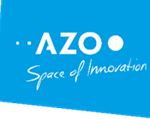 In the current climate situation, residents are looking for one thing above all else when they search for a new home: a healthy, green and resilient neighbourhood. This is a dramatic shift for the real estate industry and city authorities, as it creates a demand for real estate listings that not only share information about the price and location of properties, but also on their green credentials.
In the current climate situation, residents are looking for one thing above all else when they search for a new home: a healthy, green and resilient neighbourhood. This is a dramatic shift for the real estate industry and city authorities, as it creates a demand for real estate listings that not only share information about the price and location of properties, but also on their green credentials.To prioritise and justify their budgets, municipalities need to identify zones which are ill-prepared for extreme heat or where urban greening is behind schedule.
WEO tackles this situation with Urban Green Tracker, which gives users near-real-time information on the coverage, health and impact of urban green on climate risks. Neighbourhood ‘greenness’ is measured by tree cover, vegetation diversity, vegetation and grass health, soil permeability, the presence of green roofs, and more. These indicators are then linked to land surface temperature to measure the risk of extreme heat and provide indications of changes in flood risk.
“Climate change is personally experienced by citizens where they live: in urban areas.
Using information based on Earth observation to make cities greener, less contributing to and more resilient against climate change is surely an ultimately demanded service”
Gunter Schreier, Deputy Director, German Remote Sensing Data Center, German Aerospace Center (DLR)

WEO
Rowan Steele, Imeshi Weerasinghe, Charlotte Wirion, Frankwin van Winsen, Thierry Nicola
rsteele@weo-water.com






